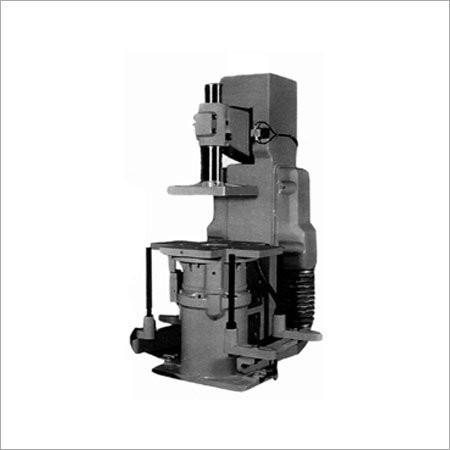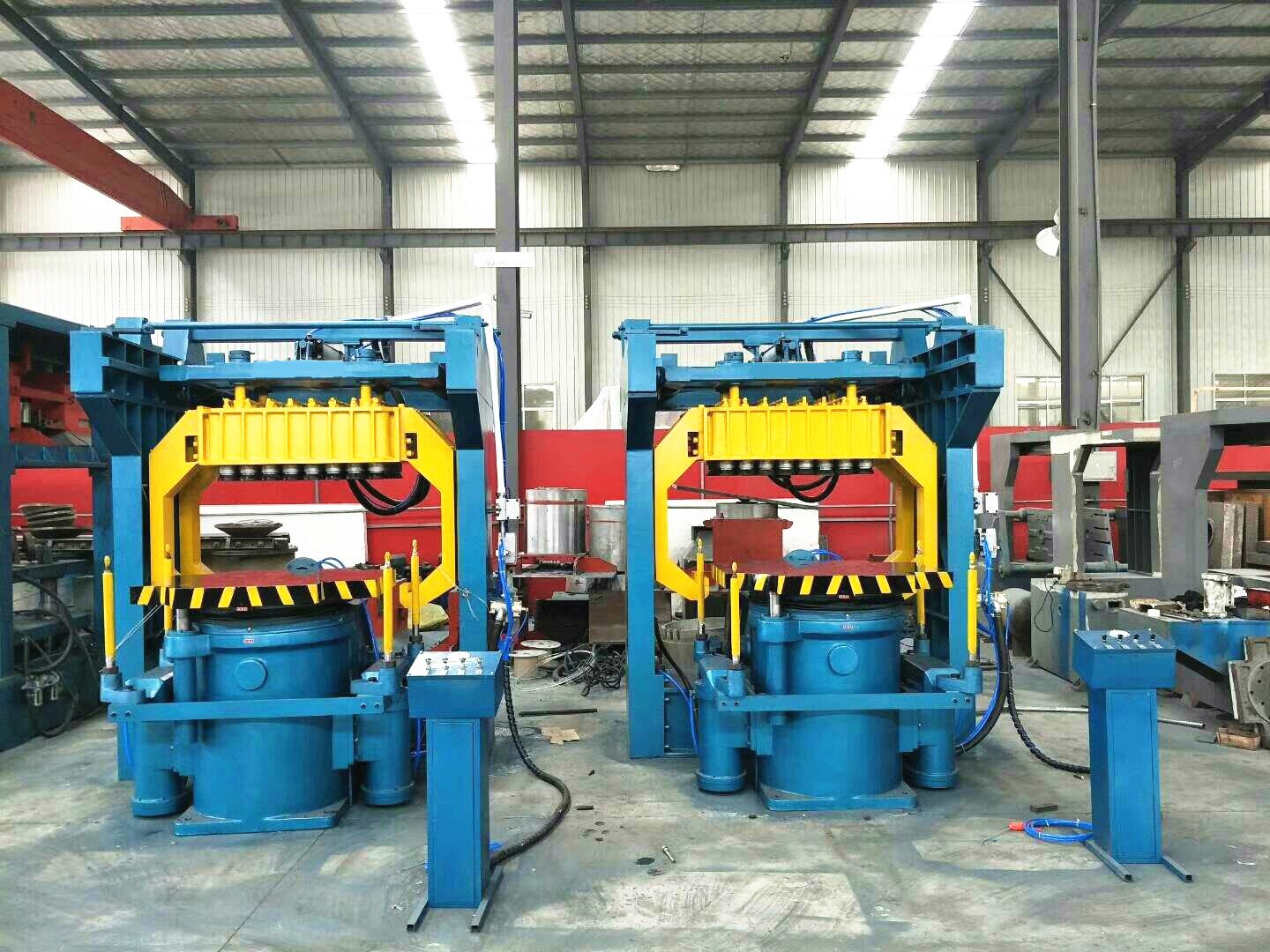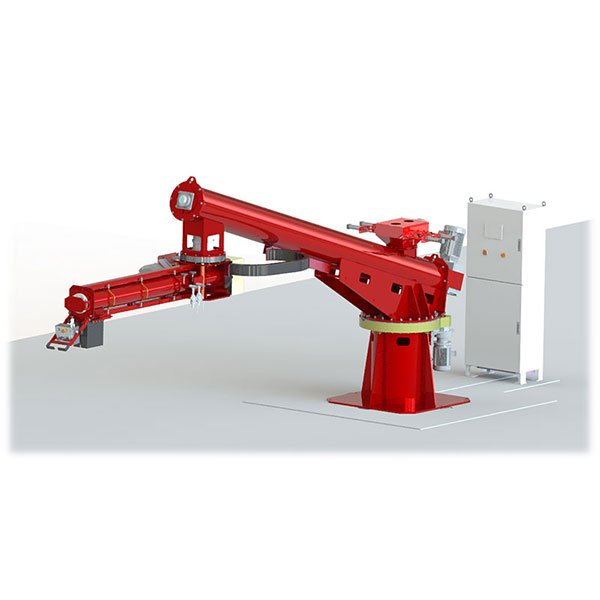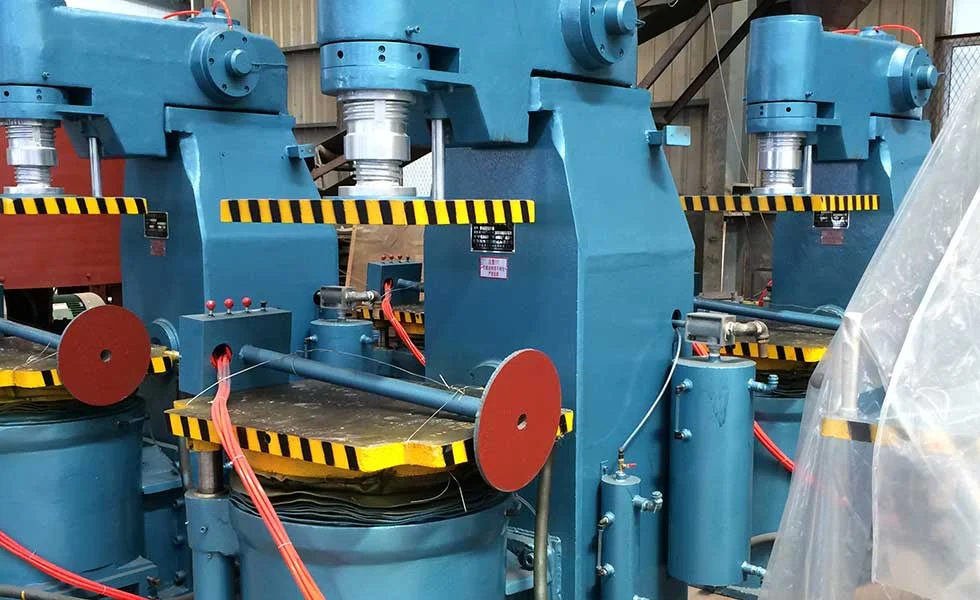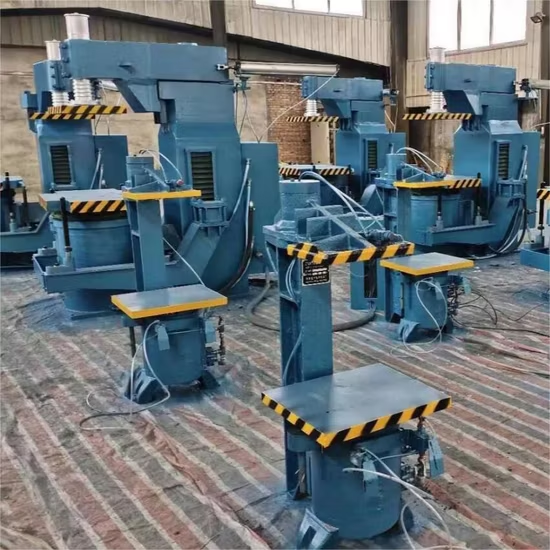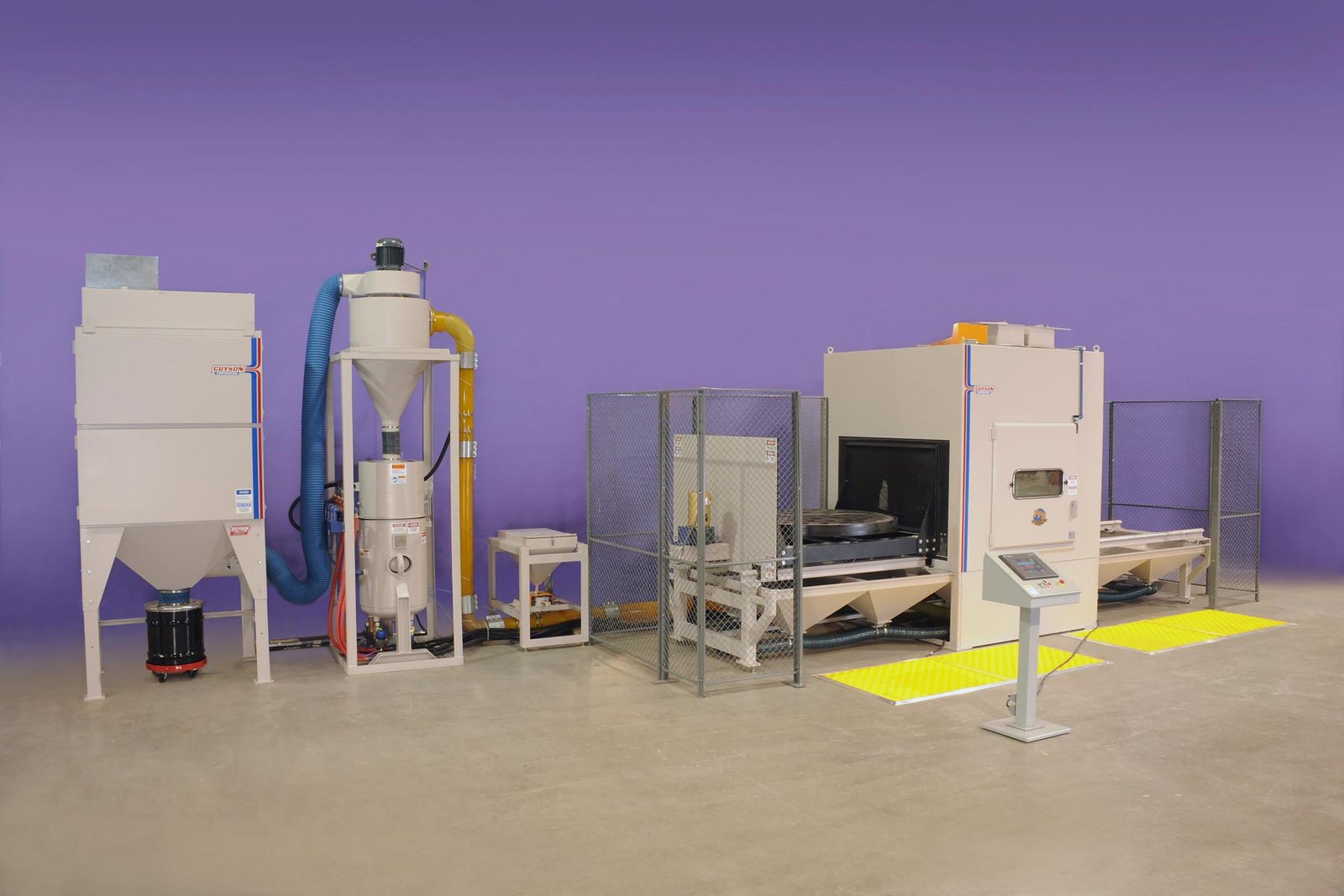
Wondering why two machines with the same name deliver such different cleaning results?
The performance of a rotary table shot blasting machine depends heavily on the design, quality, and integration of its internal components.
If you want consistent, high-quality results, understanding how each part affects the overall cleaning performance is essential. Let’s break it down.
Introduction: Why Understanding Machine Components Matters
Many buyers focus only on machine size or brand — overlooking what’s inside.
In precision manufacturing, even a minor difference in blasting consistency can mean product rejection or costly rework. Understanding components helps you choose and customize smarter.
In my experience, companies that dive into component-level evaluation always end up with machines that outperform basic catalog options.
Key Components of a Rotary Table Shot Blasting Machine (Overview)
Every part inside your shot blasting machine matters.
| Component | Function Summary |
|---|---|
| Rotary Table | Rotates parts for 360° surface coverage |
| Blasting Turbines | Propel abrasive media at high speed onto workpieces |
| Abrasive Recovery System | Collects, cleans, and recycles blasting media |
| Dust Collector | Removes airborne dust and debris |
| Control System | Regulates blasting parameters and machine functions |
| Workpiece Fixturing Mechanisms | Secure parts for stable, complete blasting |
| Cabinet Structure | Houses and protects internal operations |
Each of these plays a unique role in determining surface quality, productivity, and machine lifespan.
Rotary Table: The Foundation of Uniform Cleaning
A weak foundation means unstable results.
The rotary table’s size, rotation speed, and material composition directly impact blasting uniformity, part handling, and cleaning efficiency.

Key considerations:
| Parameter | Impact |
|---|---|
| Table Diameter | Larger tables fit larger or more parts |
| Rotation Speed | Affects blast coverage uniformity and cycle time |
| Material and Drive | Influences table longevity under heavy loads |
For instance, when processing asymmetrical parts, a variable-speed drive ensures each section gets enough blast exposure.
Blasting Turbines: The Heart of the Cleaning Process
Without strong turbines, cleaning power drops dramatically.
Turbines control abrasive velocity, coverage area, and overall blasting intensity — blade design, motor power, and positioning all matter.
Critical turbine specs:
| Factor | Result |
|---|---|
| Number of Turbines | More turbines = faster, more even cleaning |
| Motor Power (kW) | Higher power = higher abrasive projection velocity |
| Blade and Wheel Design | Determines blast pattern and efficiency |
I once upgraded a client’s turbine blades from straight to curved — instantly boosting abrasive coverage by 25% without needing extra energy.
Abrasive Recovery System: Maintaining Consistent Performance
Dirty or broken media ruin blasting results fast.
The abrasive recovery system — including bucket elevators, separators, and screw conveyors — ensures a steady supply of clean, effective abrasive.
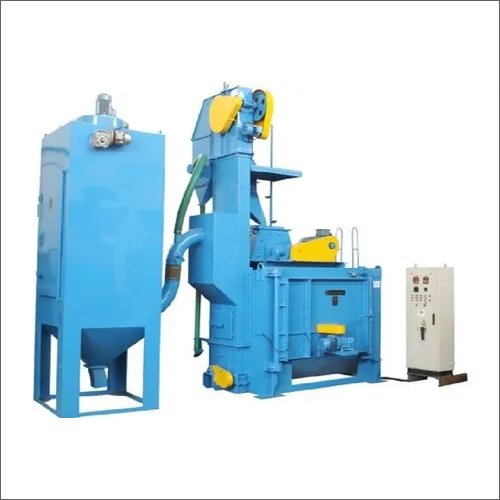
Its parts work together like this:
| Component | Function |
|---|---|
| Bucket Elevator | Lifts used media to the separator |
| Separator | Removes dust and contaminants |
| Screw Conveyor | Moves clean abrasive back to the blast turbines |
A good separator preserves abrasive quality, reduces wear, and guarantees consistent surface finishes.
Dust Collector: Protecting Parts and the Machine
Ignoring dust control can destroy machines and hurt workers.
Dust collectors maintain visibility, protect part surfaces from recontamination, and ensure operator safety.
Options typically include:
| Type | Features |
|---|---|
| Cartridge Collectors | Compact, efficient for fine dust |
| Baghouse Collectors | Large capacity, great for heavy-duty operations |
I recommend installing slightly oversized dust collectors for oversized parts — it’s cheaper than dealing with premature machine wear.
Workpiece Fixturing: Securing Parts for Optimal Exposure
Unstable parts mean incomplete or uneven cleaning.
Strong, smart fixturing — whether via clamps, custom fixtures, or magnetic tables — is critical for stable, effective blasting.
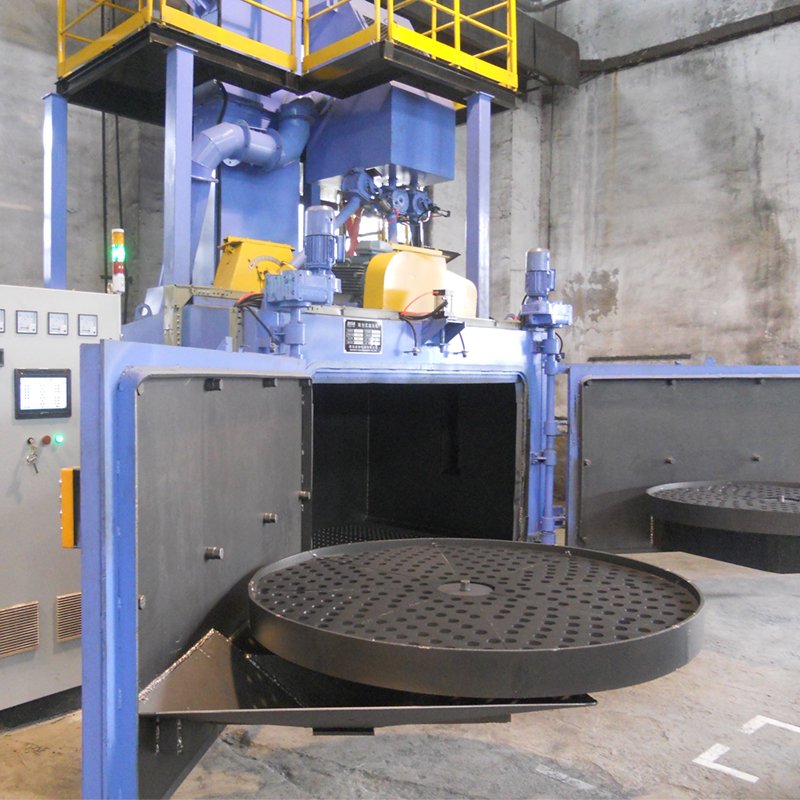
Different methods:
| Fixturing Method | Suitable For |
|---|---|
| Mechanical Clamps | Heavy and regular-shaped parts |
| Magnetic Tables | Flat ferrous parts |
| Custom Fixtures | Irregular or delicate components |
In one project, redesigning the fixturing system alone cut the client’s defect rate by 30%.
Control System: Precision and Efficiency Through Smart Programming
Manual systems leave too much room for error.
Modern PLC-based control systems dynamically adjust blast angles, speeds, and durations for different part geometries and materials.
Options comparison:
| Control Type | Characteristics |
|---|---|
| Manual Controls | Simple but limited consistency |
| PLC Programming | Adaptive, customizable, efficient |
| Smart Sensor Feedback | Real-time optimization during blasting |
Clients who opt for dynamic programming often achieve 20–40% higher throughput compared to manual systems.
Cabinet Structure and Material: Durability Matters
A weak cabinet shortens machine life dramatically.
Cabinets lined with manganese steel, rubber, or other wear-resistant materials withstand years of abrasive impact, protecting your investment.
Common materials:
| Lining Material | Best For |
|---|---|
| Manganese Steel | Heavy-duty, high-impact environments |
| Rubber Linings | Softer impact, noise reduction |
Choosing thicker or modular linings reduces downtime during maintenance cycles.
How Component Quality Impacts Total Cleaning Performance
Focusing on one component alone isn’t enough.
Cleaning performance is a system result — strong turbines can’t fix poor fixturing, and a perfect table means nothing if abrasive recycling is inconsistent.

System optimization table:
| Component | Possible Failure If Poor Quality |
|---|---|
| Weak Turbines | Inadequate surface cleaning |
| Poor Fixturing | Parts shift, inconsistent exposure |
| Bad Dust Collection | Recontamination, visibility issues |
| Flimsy Cabinet | Frequent breakdowns, safety risks |
In my view, the best machines aren’t those with the highest specs — they’re the ones with the most balanced, well-integrated systems.
Hitech-China’s Commitment to High-Performance Engineering
Not all machines are created equal — and at Hitech-China, we know it.
We select only proven, durable components and offer full customization based on your real-world needs, not just catalog templates.
Our philosophy:
| Our Practice | Your Benefit |
|---|---|
| Top-Quality Parts | Longer machine life, lower maintenance |
| Tailored Engineering | Machines designed around your workpieces |
| Smart Integration | Higher throughput, lower operational costs |
Our team works with your CAD drawings and samples to design solutions that match your exact operational goals.
Conclusion: Better Components, Better Cleaning Results
Every detail inside your rotary table shot blasting machine matters.
By focusing on high-quality, well-integrated components, you can achieve superior surface cleaning, maximize machine lifespan, and reduce operating costs.


